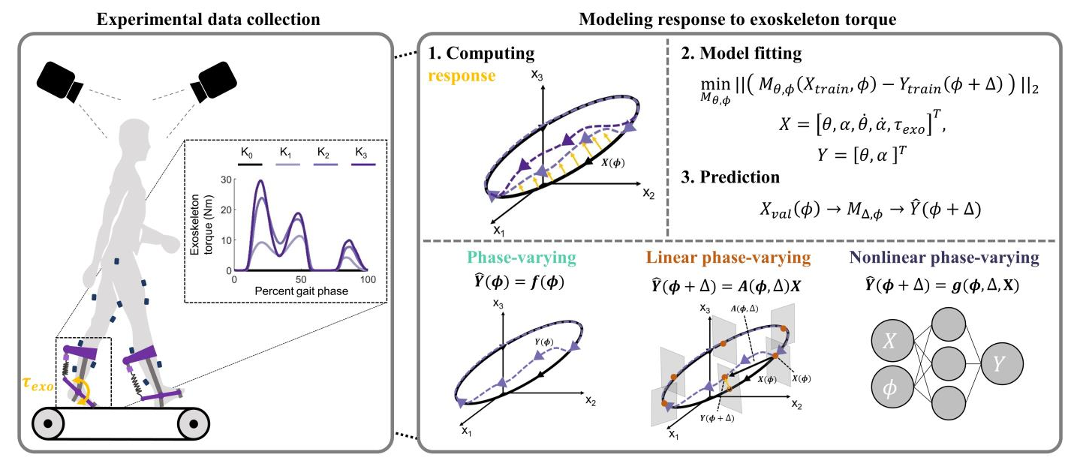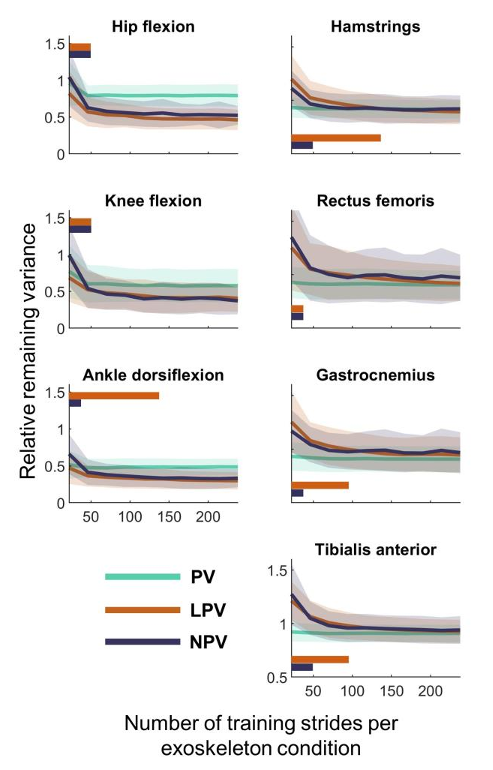




Did you find this useful? Give us your feedback











29 citations
3 citations
2 citations
1 citations
1 citations
26 citations
...exoskeleton (ankle-foot orthosis) designs in children with cerebral palsy [9]....
[...]
...exoskeleton design principles to reduce the energetic demand of walking and improve the quality of gait [1, 33 5, 7, 9, 10]....
[...]
...The amount of data required to accurately predict response to exoskeletons will restrict the settings in which phase-varying models may be practical, such as in clinical gait analysis where datasets typically contain only a small number of gait cycles [2, 9]....
[...]
26 citations
...spaced equally over the gait cycle, we fit discrete maps between initial and final phases using weighted leastsquares regression [25, 26, 29]....
[...]
...extension of Floquet Theory to gait with exoskeletons and indicates that, for rhythmic locomotion at a constant speed over level ground, linear phase-varying models appear to have sufficiently complex structure to predict kinematic responses to exoskeletons [25-27, 29]....
[...]
...and prior models of human locomotion, LPV models appear appropriate for predicting responses to exoskeleton torque over short prediction horizons, evidenced by its similar prediction accuracy to the more complex NPV model and improved prediction accuracy over the less complex PV model [25-27, 29]....
[...]
...Moreover, phase-varying modeling principles have been applied to biological systems, identifying linear phase-varying dynamics to investigate gait stability and predict changes in kinematics in response to perturbations [25, 26, 29-31]....
[...]
...Since passive exoskeletons typically elicit small changes in joint kinematics and muscle activity, we expected the validity of Floquet Theory for human gait without exoskeletons to extend to gait with exoskeletons, indicating that the LPV model should accurately predict responses to passive exoskeleton torque [1, 25-27, 29]....
[...]
24 citations
...However, the myoelectric and kinematic input variables used as model inputs may also be insufficient to encode nonlinear musculotendon dynamics between the initial and final phases, which are impacted by ankle exoskeletons [17, 40, 45]....
[...]
18 citations
...More physiologically-detailed musculoskeletal models have 45 been used to predict the impacts of exoskeleton design on muscle activity during walking in children with 46 cerebral palsy and running in unimpaired adults [15, 16]....
[...]
3 citations
Improving data-driven models and experimental protocols to study 464 and predict myoelectric responses to exoskeletons represents an important direction for future research. 465 Modeling responses to exoskeletons or other assistive devices using a phase-varying perspective has the 466 potential to inform exoskeleton design for a range of user groups.